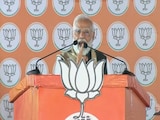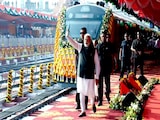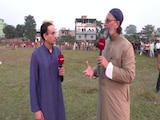The consecration of the Shri Ram Mandir is an epochal event in India's civilisational history, something that dwarfs the rebuilding of the Somnath temple in the 1950s and 1960s. When the Somnath temple was rebuilt, not only did the Prime Minister of that time see it as something the state should not associate itself with, it also came in the immediate aftermath of our bloody partition. It was a time when our frightened minorities needed reassurance, and they got it.
That is not the case now, and a Hindu population that has lost touch with its culture and civilisational heritage over the last few decades is seeking to reconnect with the past. Hence the exuberance over the 22 January pran pratishtha of Shri Ram. This time the incumbent Prime Minister is at the very centre of this process.
The flip side of Indian secularism so far has been its one-sidedness. The majority community was effectively asked to play down its heritage, except for guilt-tripping it over the negative aspects like casteism. The Nehruvian-Left consensus was that India would be best served by a partly fictional history that talked little about the damage done to the Hindu psyche by several hundred years of Islamic iconoclasm. While Nehru's secularism was driven by his own deeply felt convictions against mixing politics with religion, his successors used secularism as a tool to court the minority bloc vote. And with the Hindu vote being divided, the Congress party, and many regional parties in states, could comfortably win elections by trampling on Hindu sensitivities.
What happened in the decades after Nehru was a deracination of the average Hindu, who not only got alienated from his roots, but was additionally asked to view his religion only in negative terms - through the prism of casteism and the damage it did to social cohesion.
Over the last four decades, starting with the telecasting of the Ramayan and Mahabharat serials on Doordarshan, the sense of loss of our civilisational heritage deepened. This is what provided the emotive glue and mass awakening needed to convert a feeling of loss into a political force.
The huge expressions of joy and assertiveness we see today are signs of a civilisational rebirth that cannot be denied. It is easy to dismiss this as just a RSS/BJP political event ahead of the 2024 general elections, but it would be churlish to assume that the Ram Mandir could have been built without the political mobilisation that preceded it. Even the courts, while giving a verdict based on solid legal arguments, could not have failed to notice the underlying upsurge of feelings among Hindus.
The rejuvenation of Ayodhya, and other pilgrimage sites in Kashi, Ujjain, Puri and Mathura, is to be celebrated for the simple reason that most of them are based in some of our poorer regions. Uttar Pradesh is at the epicentre of our cultural and religious past, with three of the holiest Hindu sites located there. The creation of a new religious hub around Ayodhya, Kashi and Prayagrag will complement the development of the western region that benefits from being part of the National Capital Region (NCR). Noida and its new airport will bring economic benefits of the kind that catapulted Haryana from a Bimaru state to one of its richest. While Western UP will benefit from its proximity to Delhi, eastern UP will rise on the shoulders of Shri Ram and the religious tourism that it fosters. If Mathura is rejuvenated like Ayodhya, Western UP will get three engines for growth, including its existing tourist draw of Agra's Taj Mahal.
Nehru was wrong to assume that religion is the antithesis of modernity and development. Ayodhya will prove that over the next decade.
But Shri Ram is not just a UP phenomenon. He is a national icon, as one can see from the celebrations now seen in almost every state, including the south. While religious developments in the south have been different from the north, the fact is that north and south have always been civilisationally joined at the hip. In fact, it was Tamil kings of the Chola dynasty who took Hinduism to south-east Asia.
Critics will say that Shri Ram was a Maryada Purushottam, and he would not have wanted his temple built by excluding Muslims from being equal partners in nation-building. To be sure, reconciliation has to be a two-way process. One can only hope that a new truth and reconciliation process is initiated once the temple is open to all comers. Shri Ram's return to Ayodhya should mark a turning point in Hindu-Muslim relations.
(The author is editorial director, Swarajya magazine)
Disclaimer: These are the personal opinions of the author.















